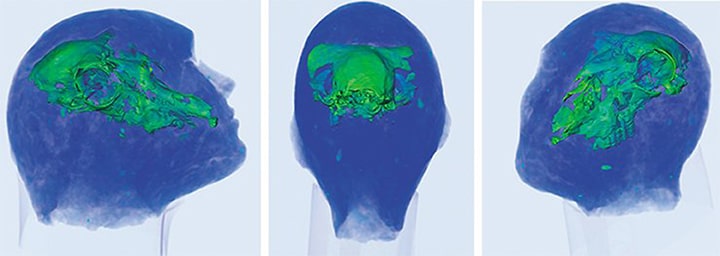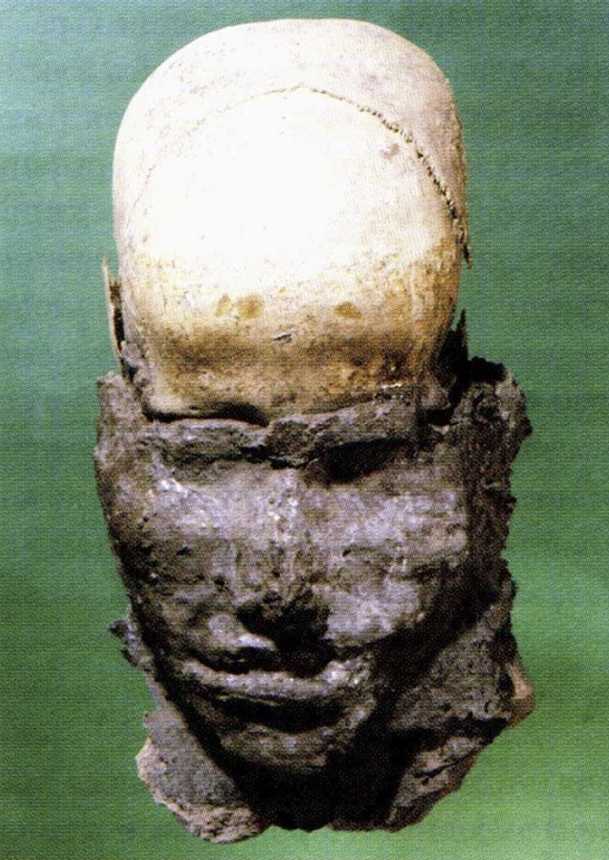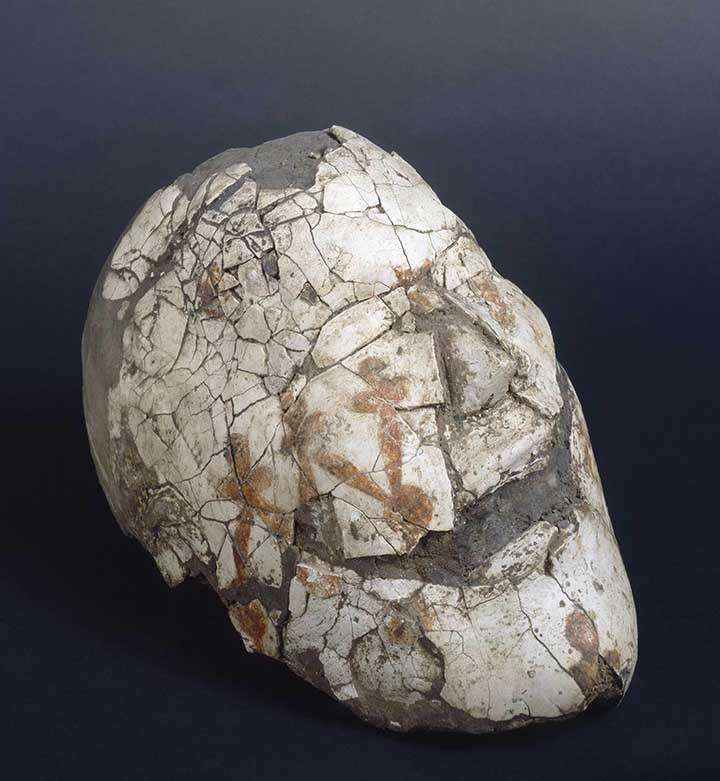An ancient sheep skull has been discovered inside the sealed “death mask” of a handsome Siberian warrior. Experts had long presumed the mask contained parts of the man’s skull, but feared they would destroy it if they opened it.
Decades later, and a new scanning technique has allowed scientists to peer inside without damaging the object. Unique among finds at the mound, known as Shestakovsky burial mound No 6, the clay head is filled with the bones of a sheep, not a human.
Now scientists are seeking an explanation for the bizarre find in the necropolis in Russia’s Khakassia region.

Dr Konstantin Kuper, of the Institute of Nuclear Physics in Novosibirsk, said: “It was suggested that there was a human skull inside.
“It was of course quite surprising to see instead a sheep’s skull.”
The precious clay head was not opened but fluoroscopy was used to recognise the ram’s head inside the death mask.
The warrior was from the Tagar culture, which was known for its elaborate funeral rites.

The dead were preserved for years by their families as they mummified – and then mass burials were held containing some 200 bodies.
Senior Russian archeologist Professor Natalya Polosmak said the ram skull mask is “the only such case so far”.
Now an effort is underway to get into the heads of the ancient people to understand why the human skull was replaced with a sheep’s.
She claimed that the mysterious prehistoric man may have been lost in “alien lands” – so a ram’s skull was used as a “symbolic replacement”.
Or he may have been seen as a wrongdoer and replacing his skull with that of a ram – often worshipped by ancient people – may have given him a chance to make a “fresh start” in the afterlife.

Another expert Dr Elga Vadetskaya said these ancient people first made a temporary burial to partially mummify the dead.
The skull was trepanned and the rest of the brain was removed.
Then the skeleton was turned into kind of ‘doll’ – it was wrapped around with grass and sheathed with pieces of leather and birch bark – and a clay death mask covered the head, covered with gypsum and decorated with ornaments.
The deceased were then returned to their families, often for years, perhaps decades, before a mass burial, reported The Siberian Times.

Dr Vadetskaya claimed the mummified corpses sometimes disintegrated.
“For some mummies the wait was too long,” she wrote.
“They decomposed, so only the heads were left to be buried. In some cases even the head did not survive.
She continued: “Then they had to recreate the whole image of the deceased one.”
Dr Vadetskaya believes this is why the Tagar warrior’s skull was replaced with that of a ram.



